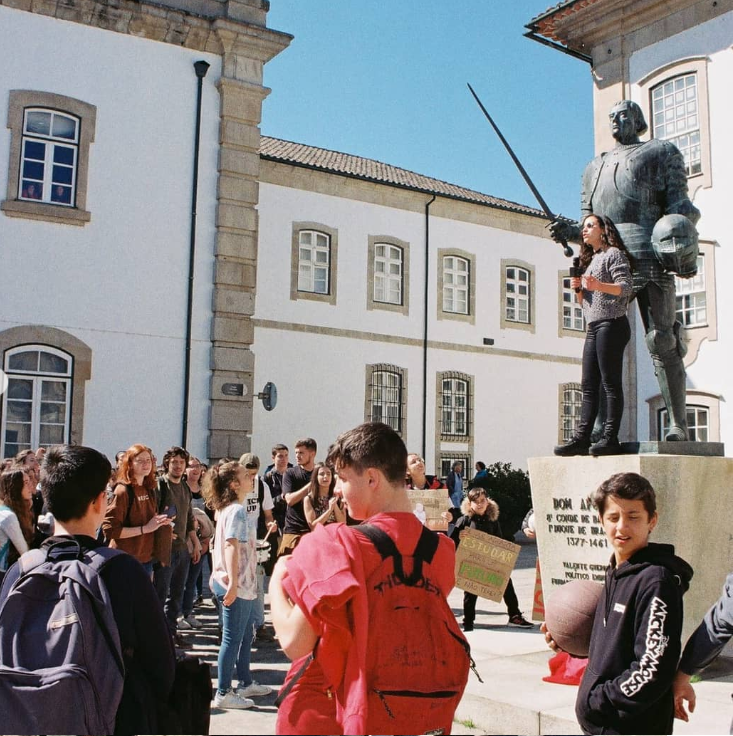As someone who has grown up in a rural area, 472 km away from the capital, in a historically centralized country (OECD, 2020) like Portugal, I have long felt the incongruencies between our cities’ networks for cooperation and resource management and those in the rest of the country.
It all started when Greta first stood in front of the Swedish parliament—I stood in the streets of my town and protested the state of the planet, along with millions around the world.
Soon enough, the looks of the passersby as we marched past began to haunt me. They would pop into my mind and make me think: “Wow, they must feel confused”. We weren’t protesting against them, we were protesting the fate that older generations had left for us and the planet we had inherited.
It became clear to me then that I had been shouting into a vacuum. On my phone screen I saw youth in cities protesting and it made sense, but when I hit the streets in my hometown something felt off. As if the same demands that the youth were chanting about there didn’t quite sit right here.

Then I realised: the reality of the youth in our town was completely different not only to the passersby in the protest, but even more so, to the youth in the big cities that I could see protesting on social media.
I realised that I have more in common with those around me than those a hundred miles away with different geomorphological, environmental and social needs. At the end of the day, what I share with someone in the Algarve, 700 km away, is largely the outline of a border that creates an imaginary feeling of belonging. In the end, we create what it means to belong.
So, I started to look closer to home: at those who share a river with me, who share forests (and forest fires), similar history and culture, the same problems of being isolated from the centre of the action, and who are watching their youth leave for better education and employment opportunities. That is when I started looking across the border to Galicia, Spain
The interconnectivity between mobility, educational opportunities and nature restoration became clear to me if we wanted to build a sustainable future for these regions. It is estimated by the IPCC (2022) that urban areas are responsible for 70% of C02 emissions. It is time to rethink our cities.
One amazing solution is the 360º perspective on territory of the Eurocidade Chaves-Verín, offering immense opportunities across the Spain-Portugal border. They have run a pilot-project connecting both regions by bus, and are working on cross-border resource management, tourism, and entrepreneurial projects to make it possible for a young person to thrive and fulfil their dreams – all while remaining in their community.
A personal favorite is their free, fully equipped, rehearsal space for youth to practice musical expression.
The future can start with something as simple as allowing a young person access to a set of drums.
- Tagy
- Sustainable cities Long-Term Vision for Rural Areas Adaptation to climate change Cohesion and Cooperation Youth4Cooperation: Cross-Border Ambassadors


